Abstract
The peak procedure was used in two experiments to study pigeons' ability to time multimodal events. In the first experiment, birds were trained to time a single event consisting of a 9-s tone or light followed by a 21-s fixed interval associated with a signal of light or tone (signal of the other modality). On occasional empty trials, different lengths of the first signal were followed by a long period of the second signal. Peak response times as a function of the duration of the first signal were linear and had a slope of close to one in all birds. This indicates that the birds were timing only the second signal. In a second experiment, two complex events were used in training. One consisted of a 9-s tone or light followed by a 21-s fixed interval associated with a light or tone. The other consisted of a 21-s tone or light followed by a 9-s fixed interval associated with a light or tone. Different durations of the first signal were again used on empty trials. Peak response times as a function of the duration of the first signal were again linear in all birds. The slope of the function was less than one but greater than zero for 3 birds. This indicates that these birds were partly timing the entire complex event of 30-s duration and partly timing only the second signal of the event. A model is proposed in which the bird takes as a criterion for timing a weighted average of different target criteria. Comparisons with the performance of rats are made.
Keywords: timing, peak procedure, internal clock, multimodal, key peck, pigeon
Full text
PDF
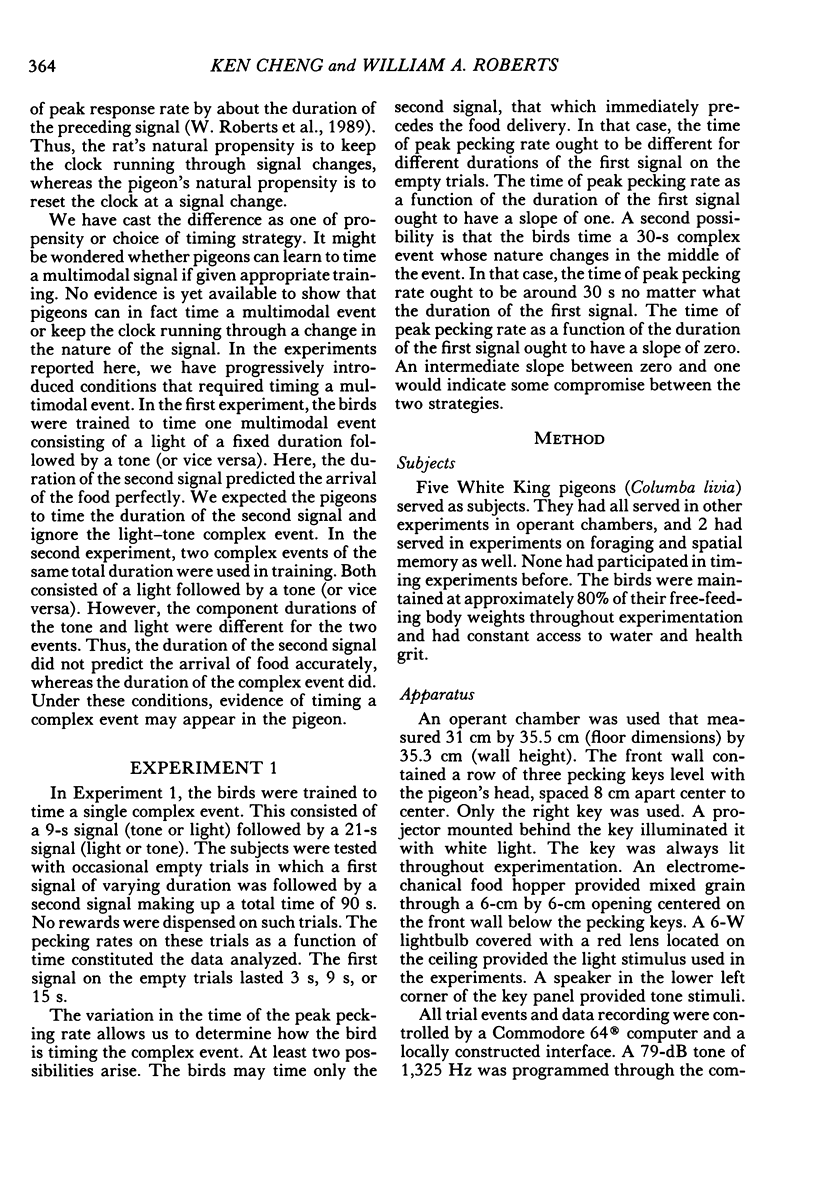
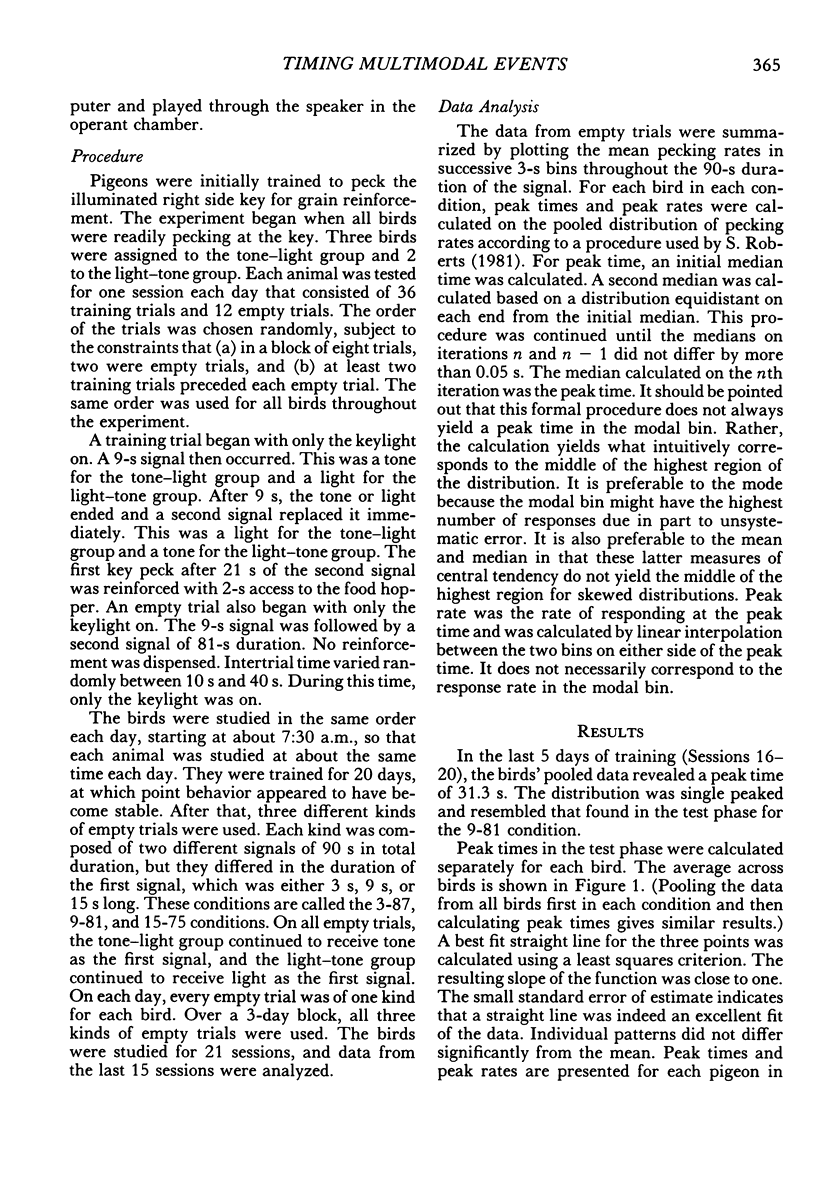
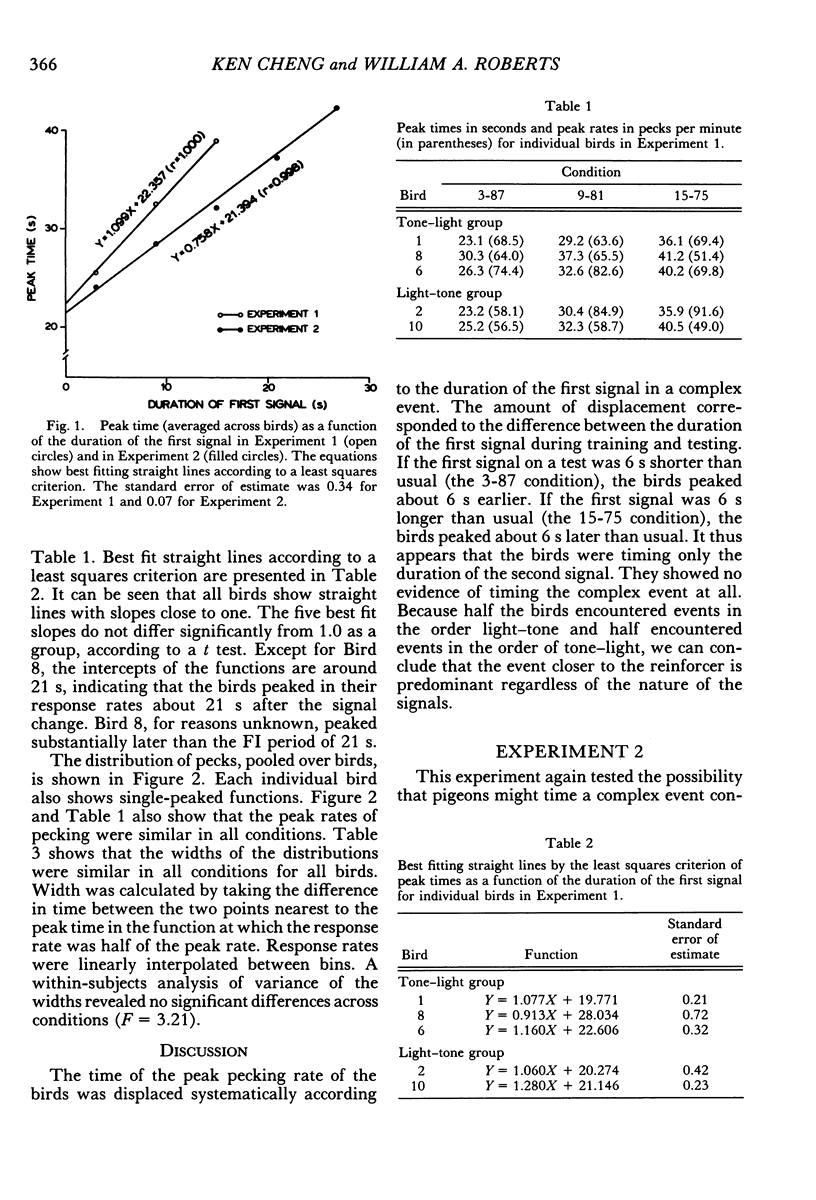
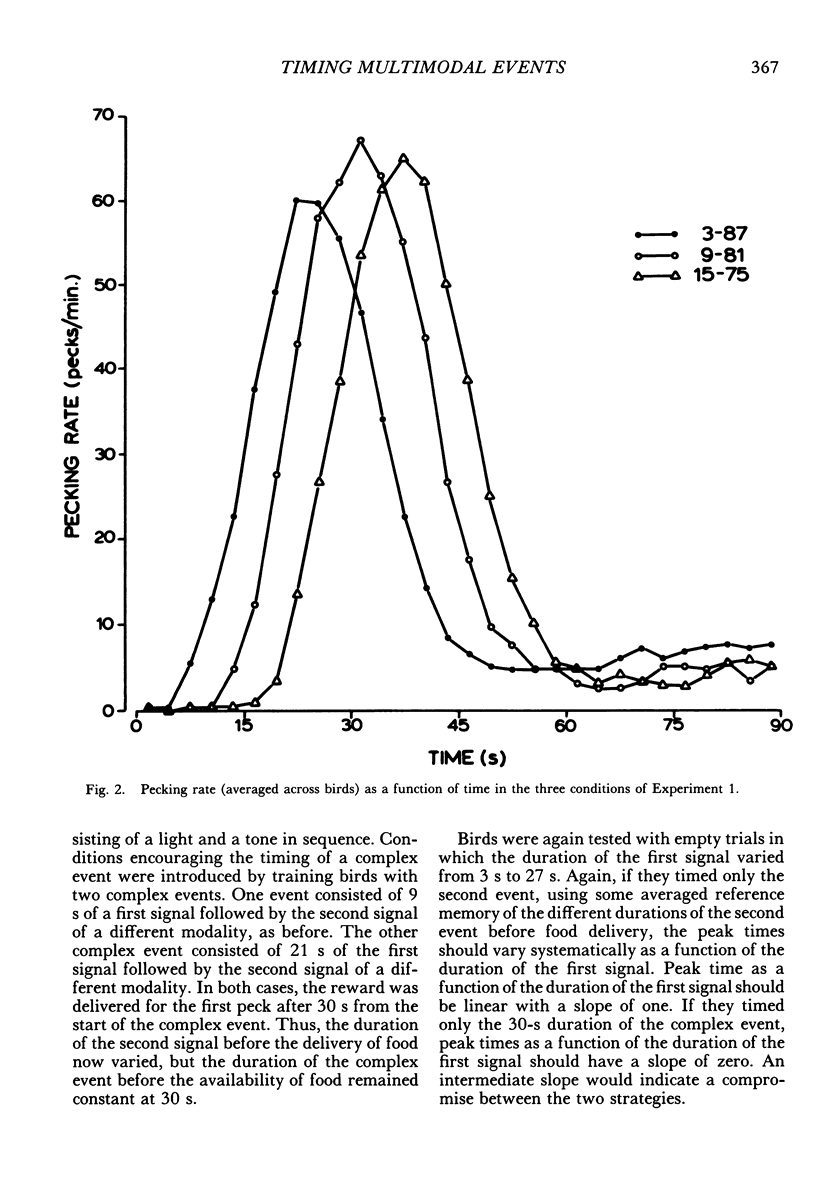


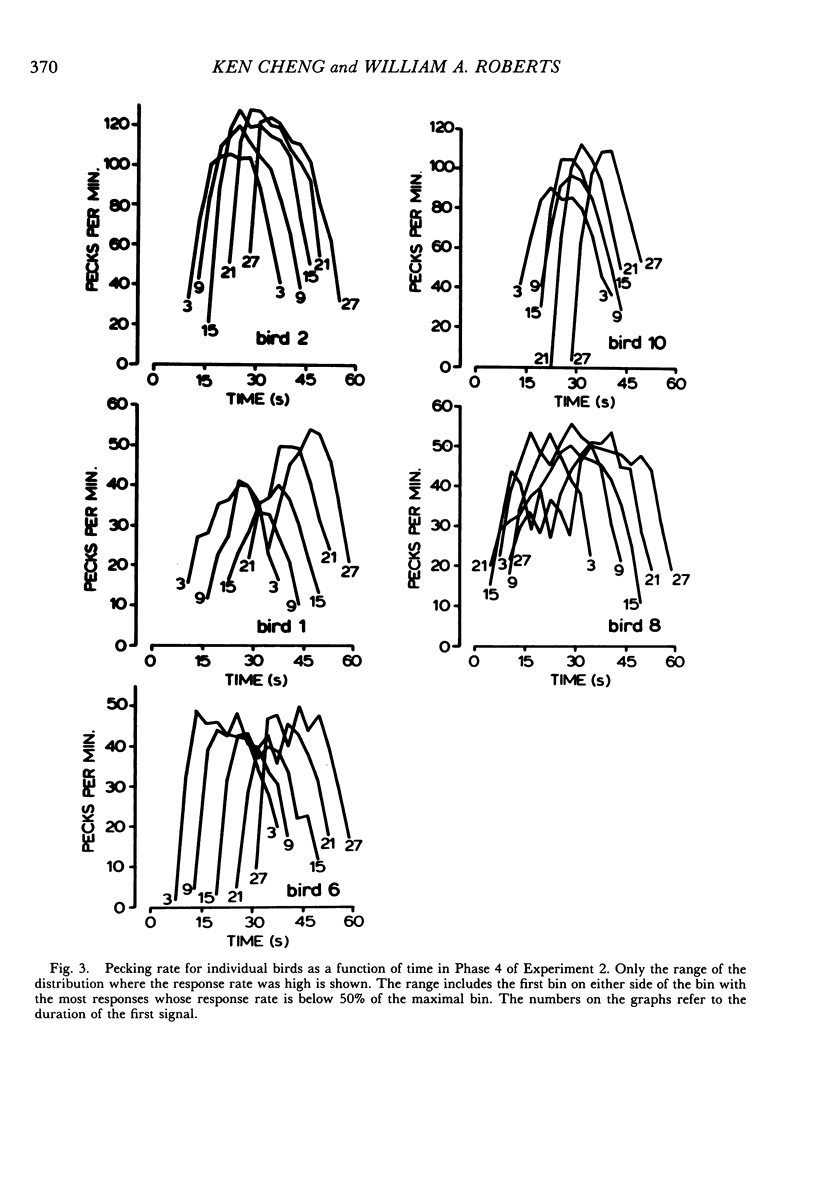

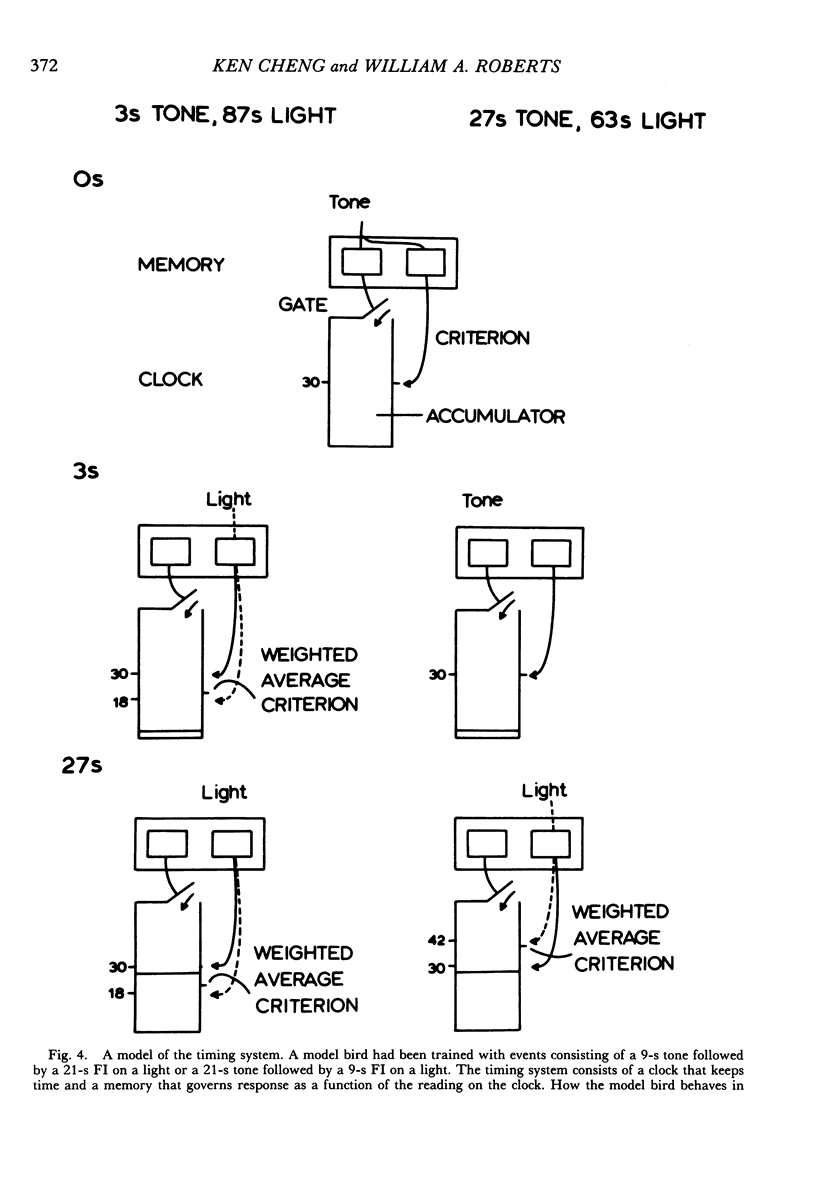
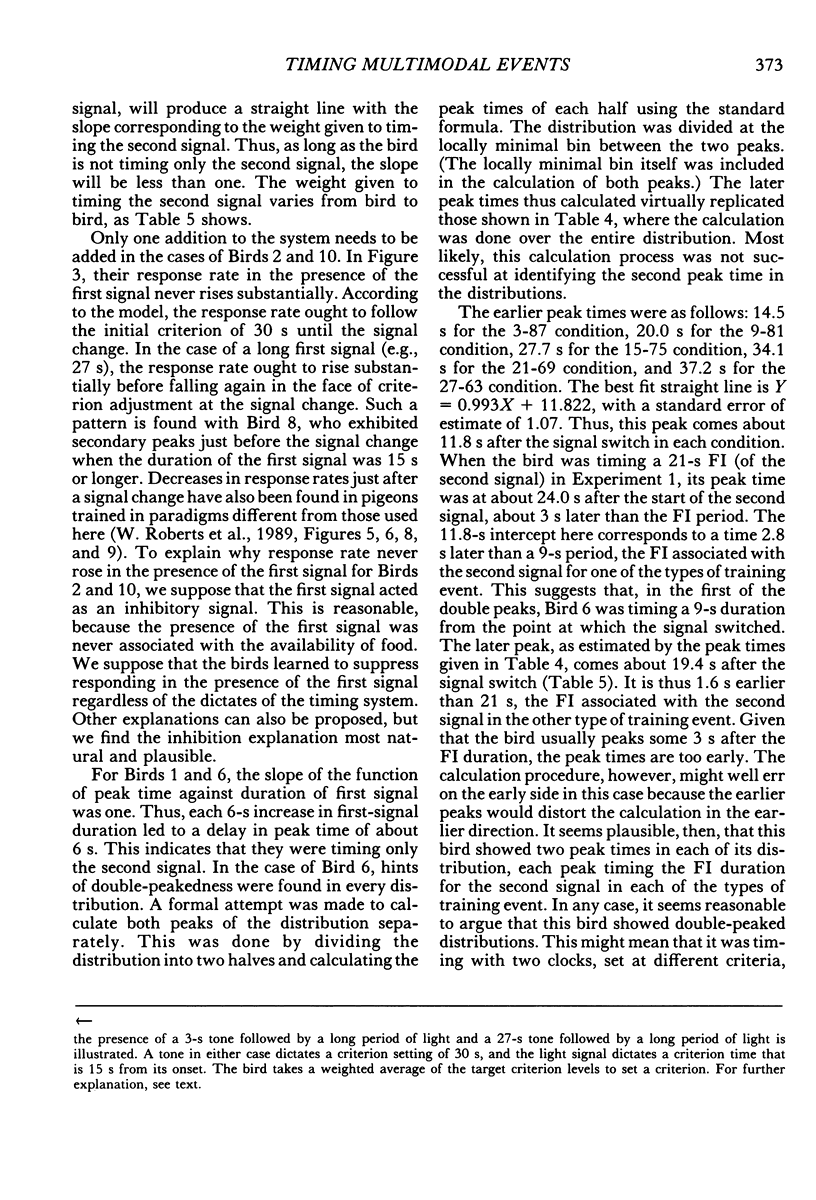
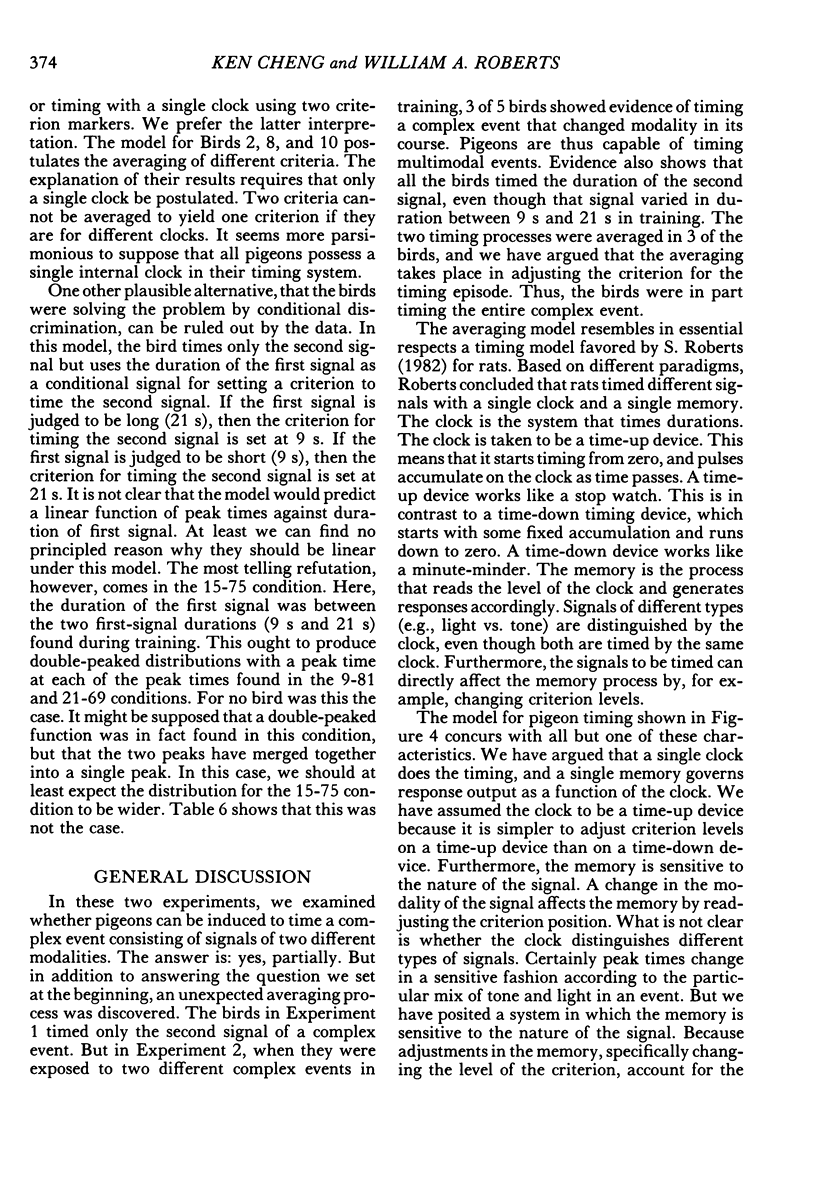
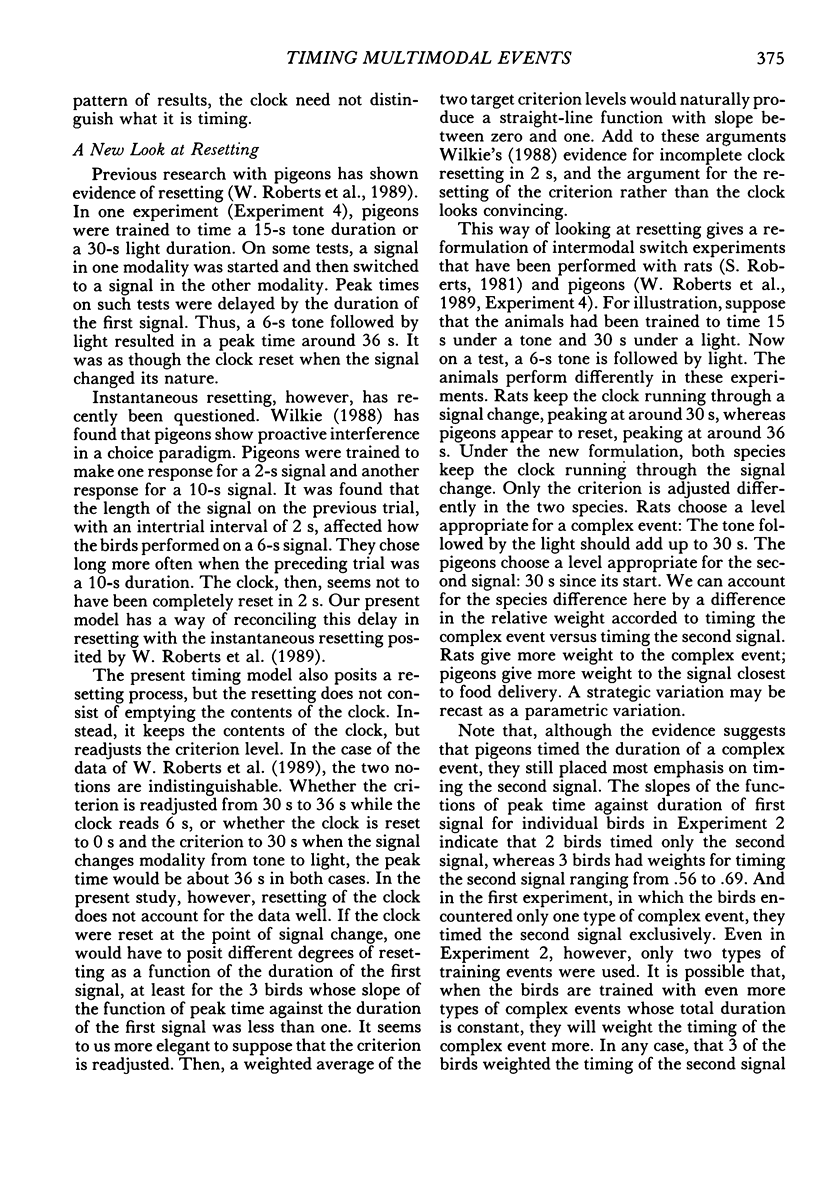
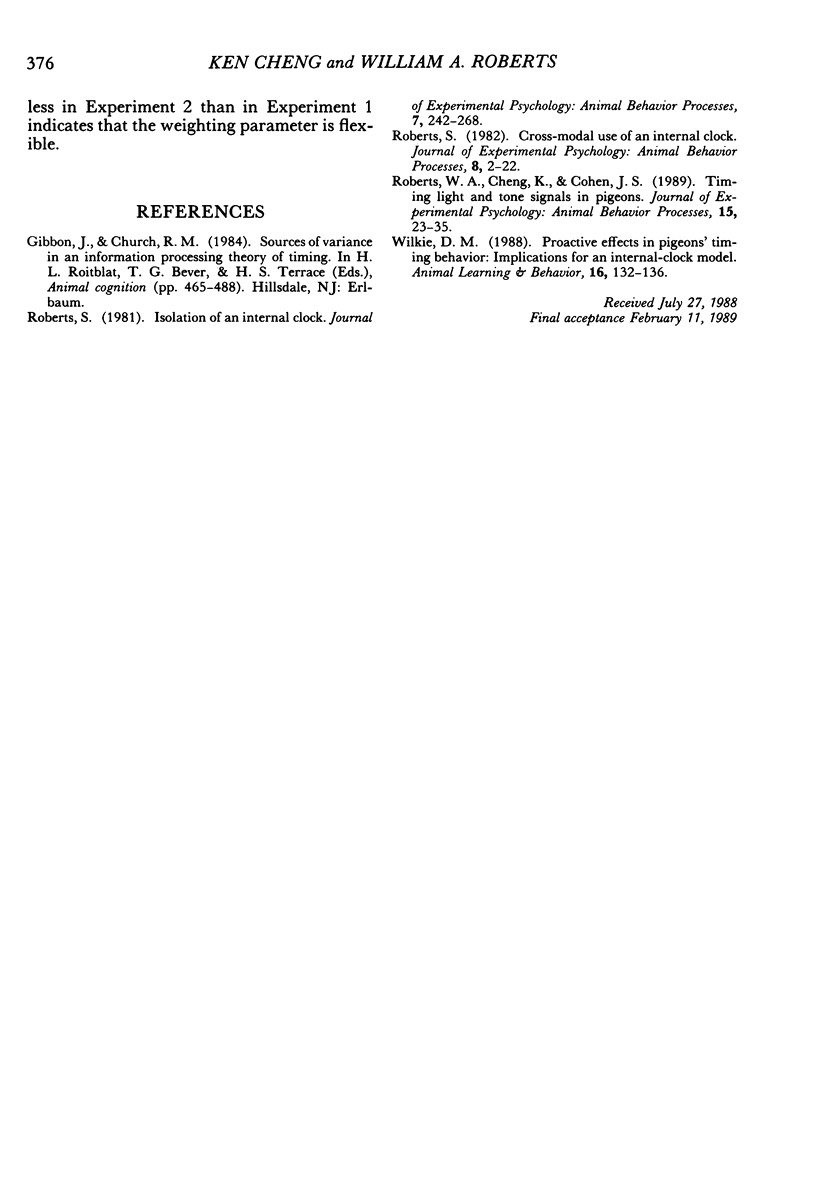
Selected References
These references are in PubMed. This may not be the complete list of references from this article.
- Roberts W. A., Cheng K., Cohen J. S. Timing light and tone signals in pigeons. J Exp Psychol Anim Behav Process. 1989 Jan;15(1):23–35. [PubMed] [Google Scholar]


